Preparing to leave Muscat for Dubai, the hot Arabian sun was yet to rise as the hypnotising sound of morning prayers wafted out from my taxi’s radio speakers. The dark and quiet roads we took as we made our way from the hotel were themselves just like any, but the domes and minarets decorating most buildings along each side were, on face value, evidence that I was still very much out of my comfort zone. I was used to well-worn travel routes. The kind of places where if you got lost or needed advice, the person sharing your bunk would probably be able to help. Or the type of place that might have an English style pub somewhere.
Oman felt different – but how different?
I’d really stressed myself out about this day trip. I had decided a while back that on the way to Australia I’d spend a weekend in Dubai. Eventually I got so used to the idea that I wanted an added challenge, and noticed that there was a daily bus to Muscat, the capital of Oman, just across the border. Another country to tick off, yes please.
After going through a confusing booking process online and printing out what I hoped were my bus tickets, the trip was confirmed: I’d be getting the 7am bus to Muscat on the Saturday and the 6am bus back to Dubai on the Sunday.
The lack of flashy skylines despite its wealth was noticeable and things seemed more subtle here than in neighbouring countries. You won’t find flying taxis in Muscat.
When the day came, I’d only spent a night in Dubai after flying in from Heathrow so I was already shattered, but I was excited about seeing what many people had told me was the “real” middle East, a throwback to a time where this part of the world retained its unique character.
Certainly, the vibe I got was that Oman very much does its own thing. The lack of flashy skylines despite its wealth was noticeable and things seemed more subtle here than in neighbouring countries. You won’t find flying taxis in Muscat. Much the country’s stability is often put down to the highly popular late leader Sultan Qaboos bin Said who ruled for 50 years from 1970 and who’s open minded attitude and non-aggressive approach to foreign affairs provided the backdrop to fast development. As a result of this culture of relative modesty, Oman seems to enjoy a low-key role amongst the gulf nations.
The border crossing showed me the type of quirks I hadn’t experienced during more traditional backpacking. In Southeast Asia there had usually been some sort of scanning system to detect anything governments didn’t want coming in. Here however, on entering Oman’s dusty backwaters the officials at the border town in Hatta lined us all up outside our bus with our suitcases a few feet away. We watched as sniffer dogs inspected our luggage, moving up and down the row of bags, then once more. I have to admit that a lot of negative thoughts were going through my mind at that point… I didn’t know what the rules were here or whether I had with me anything that would get me questioned.
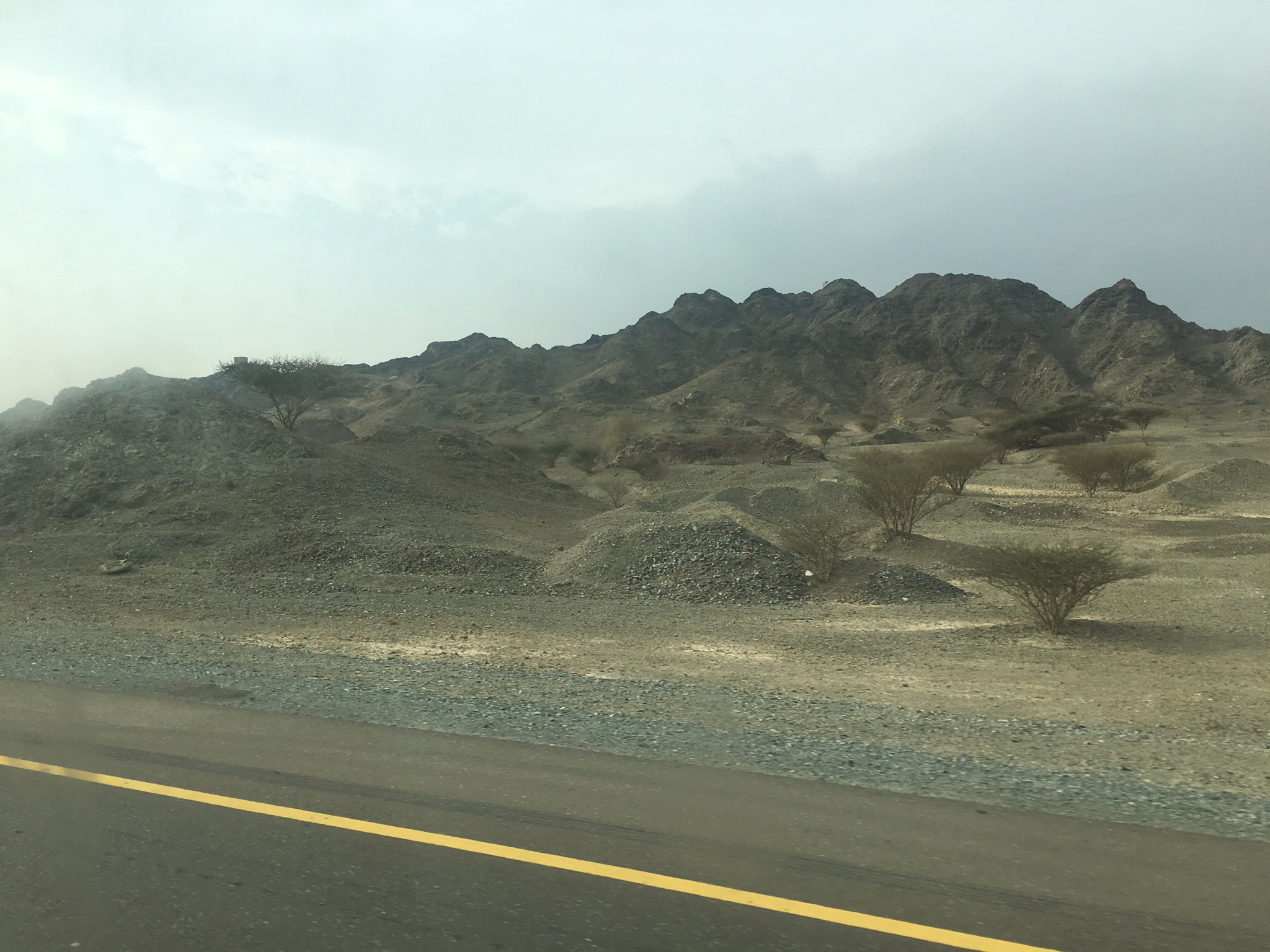
After a couple of minutes that felt like an hour, there was a burst of relief when we were told to be on our way. Thinking back to how honest and genuine Oman was as a whole I realise now that I had nothing to worry about. In fact, a by-product of Oman’s slightly more hands-off role in gulf politics is that it is rarely linked to any of the sort of trouble that neighbouring countries have had to deal with, which I thought made it the perfect un-daunting place to get my first taste of the middle East.
Once at the hotel, there was little time to assess how my first impressions contrasted with any existing preconceptions – I had to come up with a quick plan if I was to see the sights in my one day there. The helpful man on reception did me a massive favour by arranging Gafoor, a local taxi driver, to drive me around for the day for 20 rials.
The Omani Rial was, by some way, the most confusing currency I’ve ever had to deal with. There was no real reason why it should have thrown me so much, apart from the fact that one rial was worth more than one pound. So where in other countries I’d been used to rounding down when I was quoted a price, in Oman I had to remember that 20 rials was closer to £40.
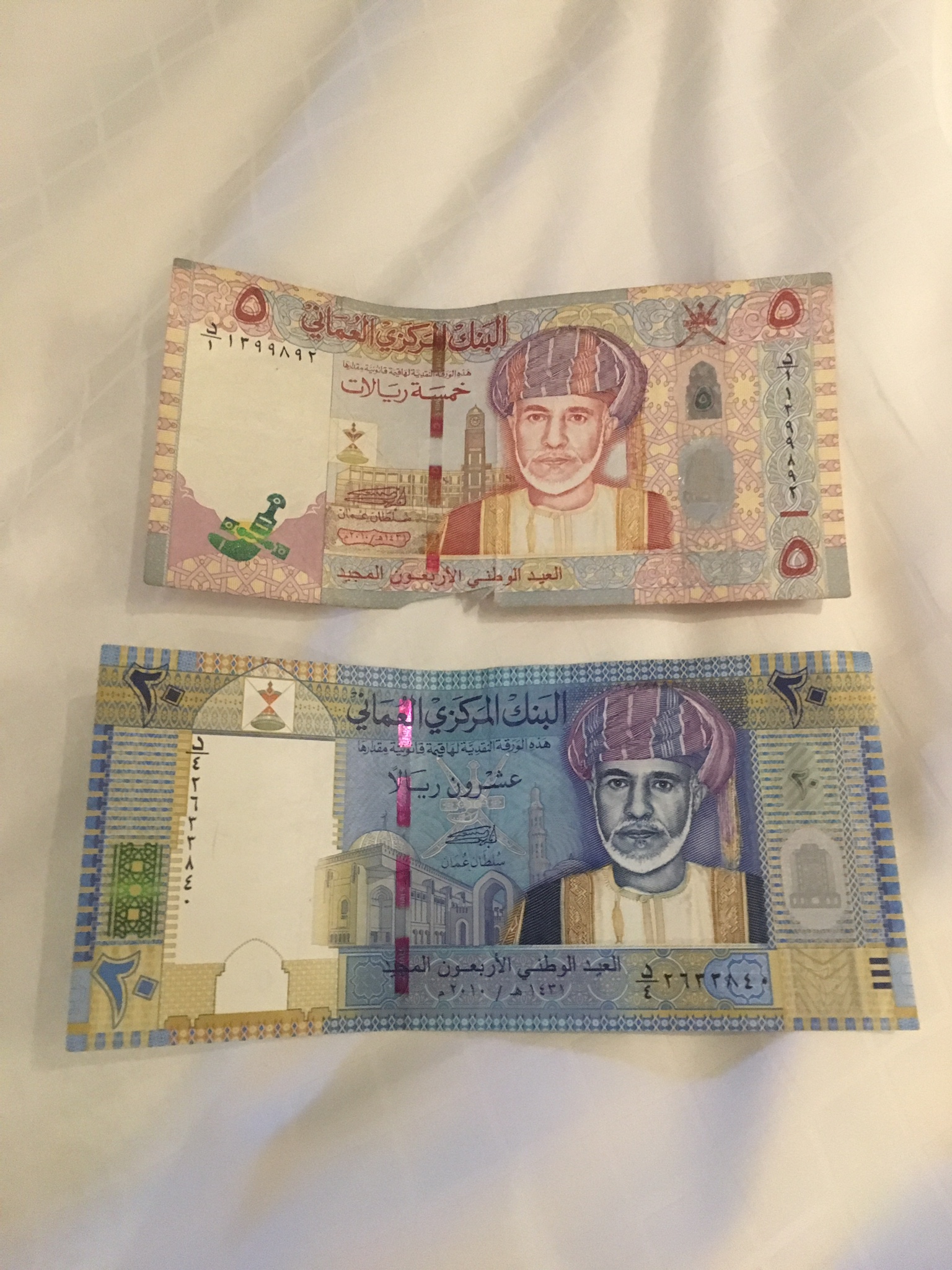
Despite this, it was a good price. All I needed to do was tell Gafoor a list of the places I wanted to see during the day, he’d then drop me off and pick me up at an agreed time. He was more than happy to be my host and chip in with some pointers when he thought they’d be relevant.
First up it was the Sultan Qaboos Grand Mosque, many people’s number one place to see in Oman, let alone Muscat. With over 400,000 square metres to explore there is certainly a lot to see. Unlike many older religious monuments in the region it is relatively new and was only finished in 2001, but it incorporates many elements of Oman’s Islamic history and has become of one Muscat’s defining landmarks. On arrival I was met with bright sandstone minarets contrasting against the clear blue sky, rays of sun shining through tall, inscribed arches and flowerbeds lining the outside of the mosque. It certainly added something completely different to my travel experiences.
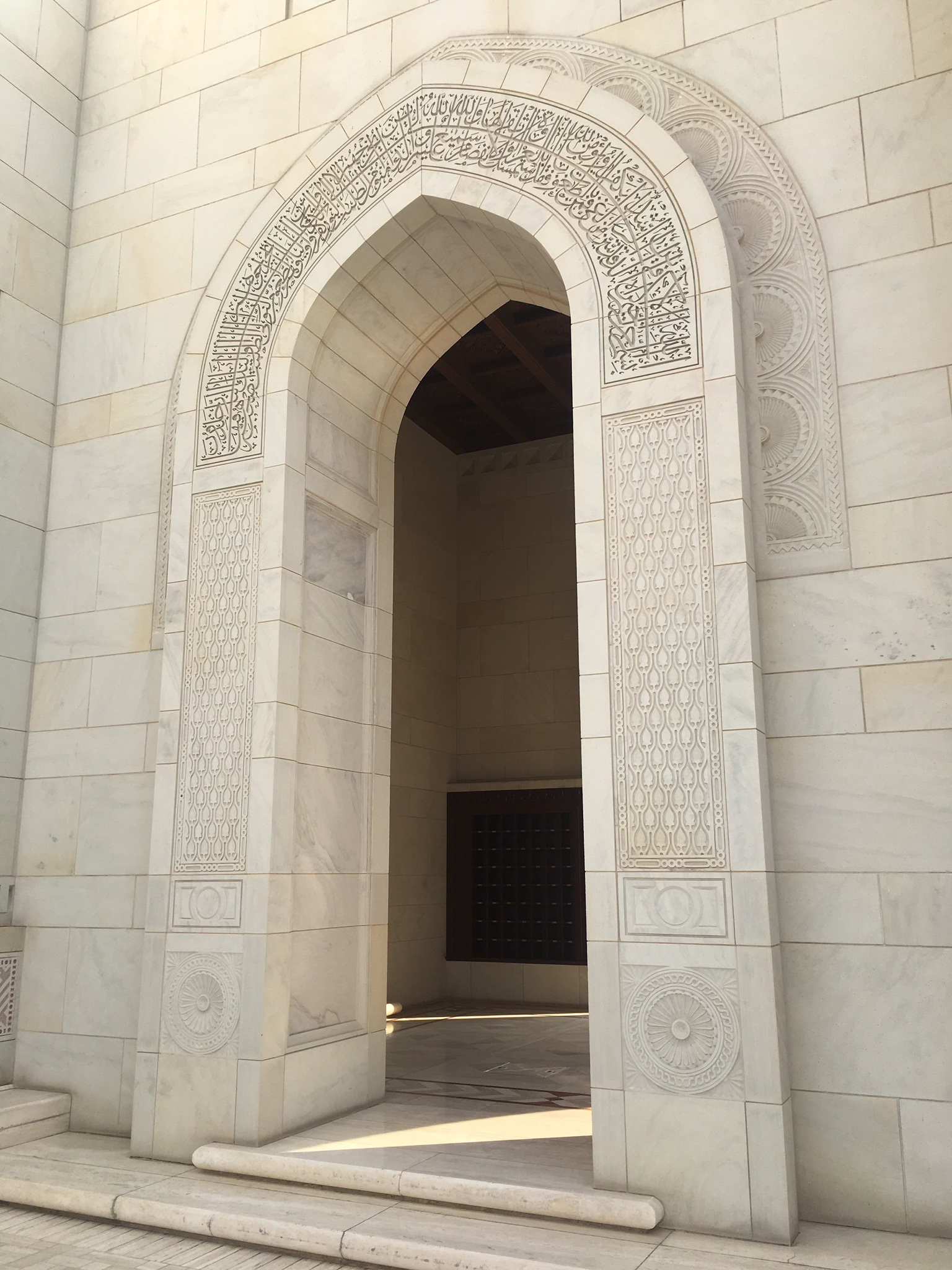
I had enjoyed a range of settings from peaceful Thai beaches to lively European capitals, but I’d never seen a monument so relatively young that looked like it could have been there for centuries. It almost didn’t matter that I wasn’t able to go inside (opening times for tourists are limited to a few mornings during weekdays), with good access to the rest of the grounds I wasn’t disappointed.
I’d seen pictures of grand Islamic mosques but there was something uncomplicated about this place, it didn’t feel overly imposing despite its size and there was plenty of open space wherever I stood. The extras had been kept to a minimum and everything that was there felt right being there. Which meant that the Mosque’s reflection managed to stand out on the enormous marble floors, a sight in itself.
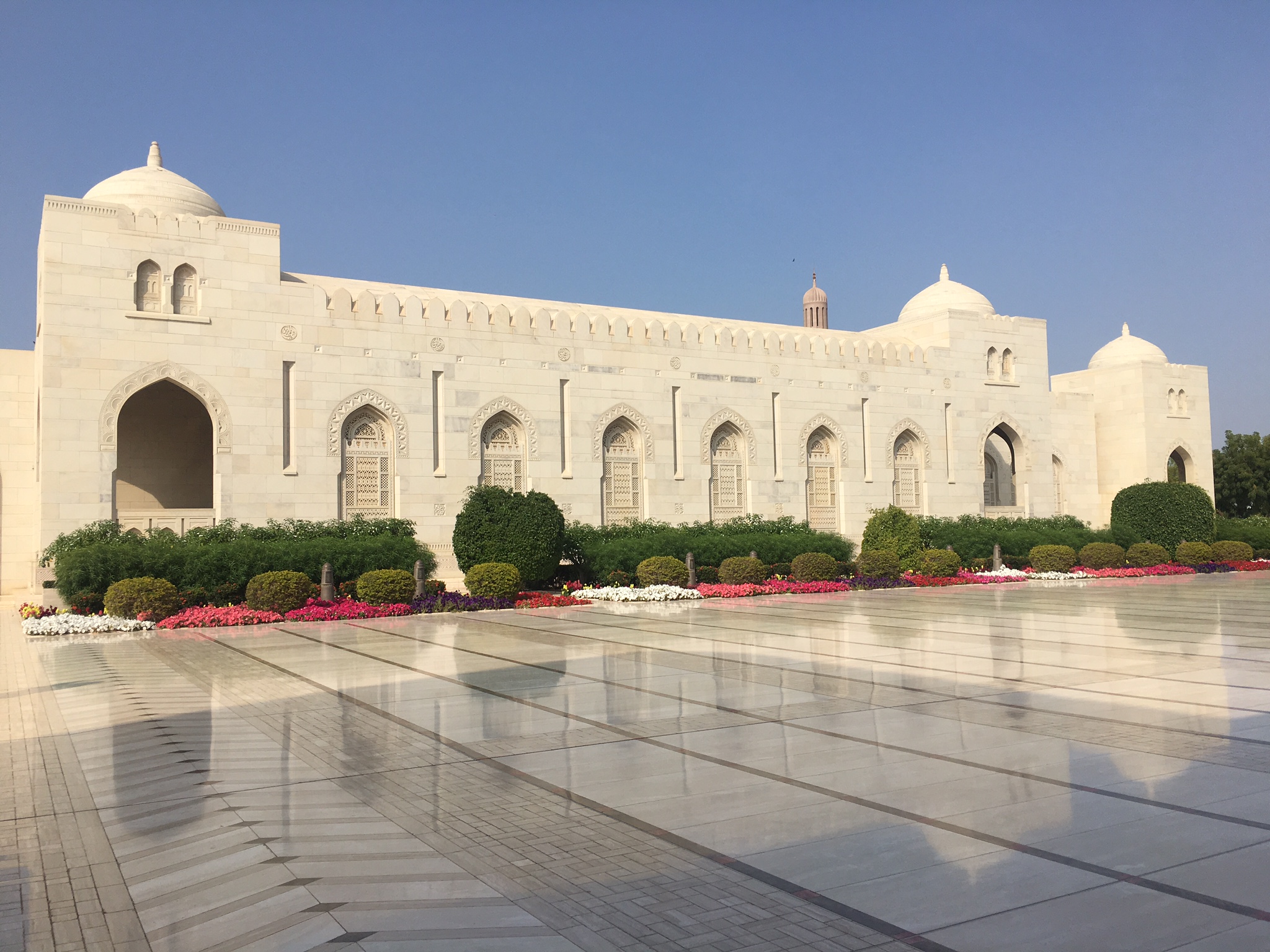
In addition, there weren’t many people around which was ideal for me because I hate the thought of someone watching me take hundreds of pictures in awkward poses.
A bit further out of town was Qurum beach, another of the big attractions in Muscat, and although the visit was short Gafoor was happy to give me some alone time to stroll the coastline. I didn’t ask what he did or where he went while he was waiting for me but he’d always reliably turn up at the pre-agreed time with no fuss. At the beach, I got to see a side of Oman that I wasn’t really expecting and hadn’t looked into much before the trip. It was pretty laid back being February, though I could imagine that in the summer months it would be packed with people enjoying the long stretch of sand that I walked along, with tall, skinny palm trees on one side and the blue ocean on the other. After walking as far away from where I was dropped off as I could without getting lost, I reached a little opening opposite Al Qurum Resort, with a carpark and a fairground nearby. Obviously there were a few pictures getting taken here as a slightly denser collection of palm trees created a more photogenic backdrop to the type of picture I wanted to take, give or take the McDonald’s just out of shot.
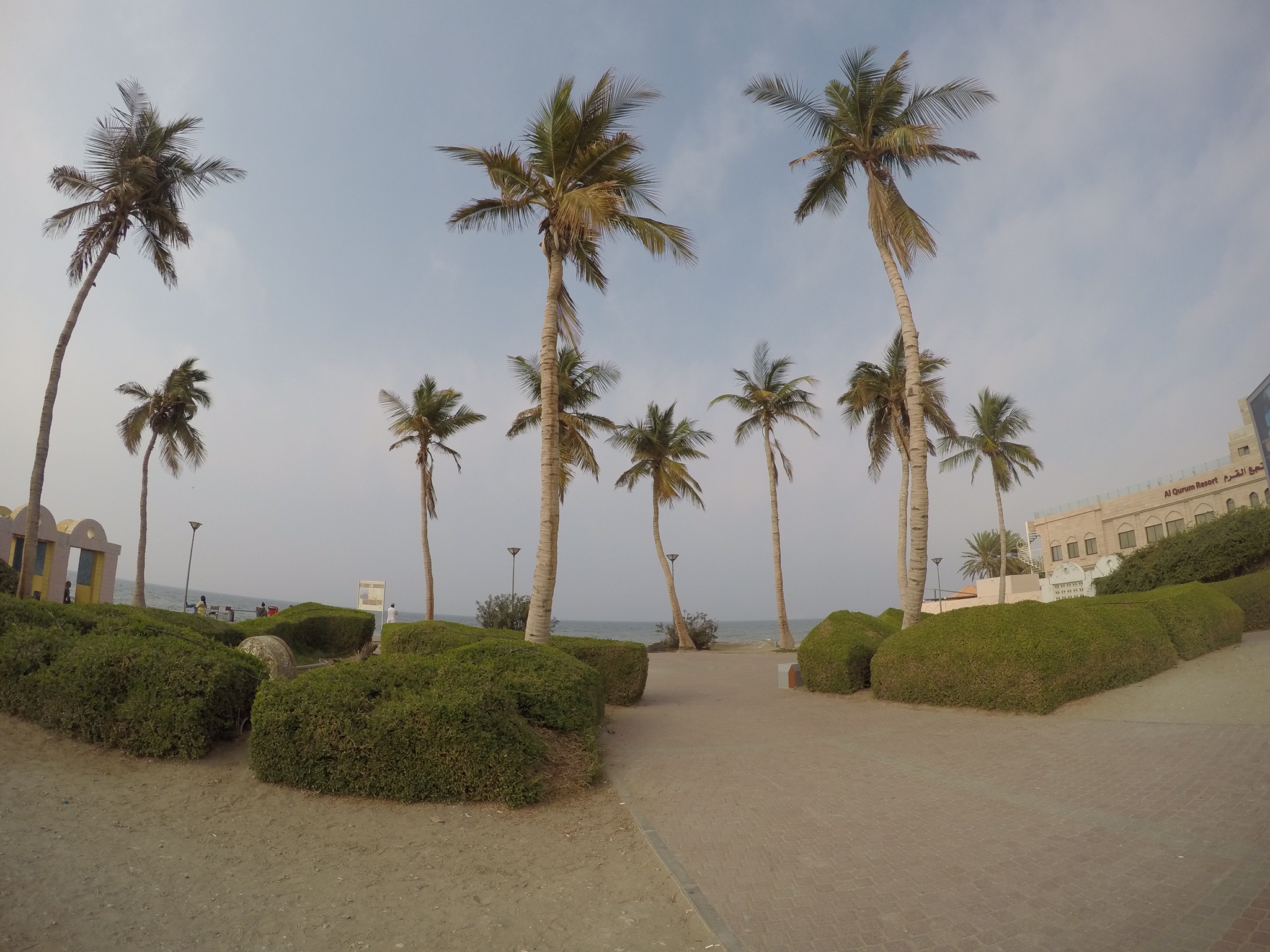
My highlight of the day, however, was Muttrah Souq, which lived up to all the pictures and reviews I’d seen during my research on Oman. Nestled in the rocky landscape which overlooks Muscat harbour and the Gulf of Oman, and through a mysterious gateway lies one of the oldest existing marketplaces on the Arabian peninsula. Jewellery and decorative genie lamps, shisha pipes, local textiles and every other type of middle Eastern ornament you can think of line each stall from top to bottom in this indoor market about 20 minutes drive from the centre of Muscat.
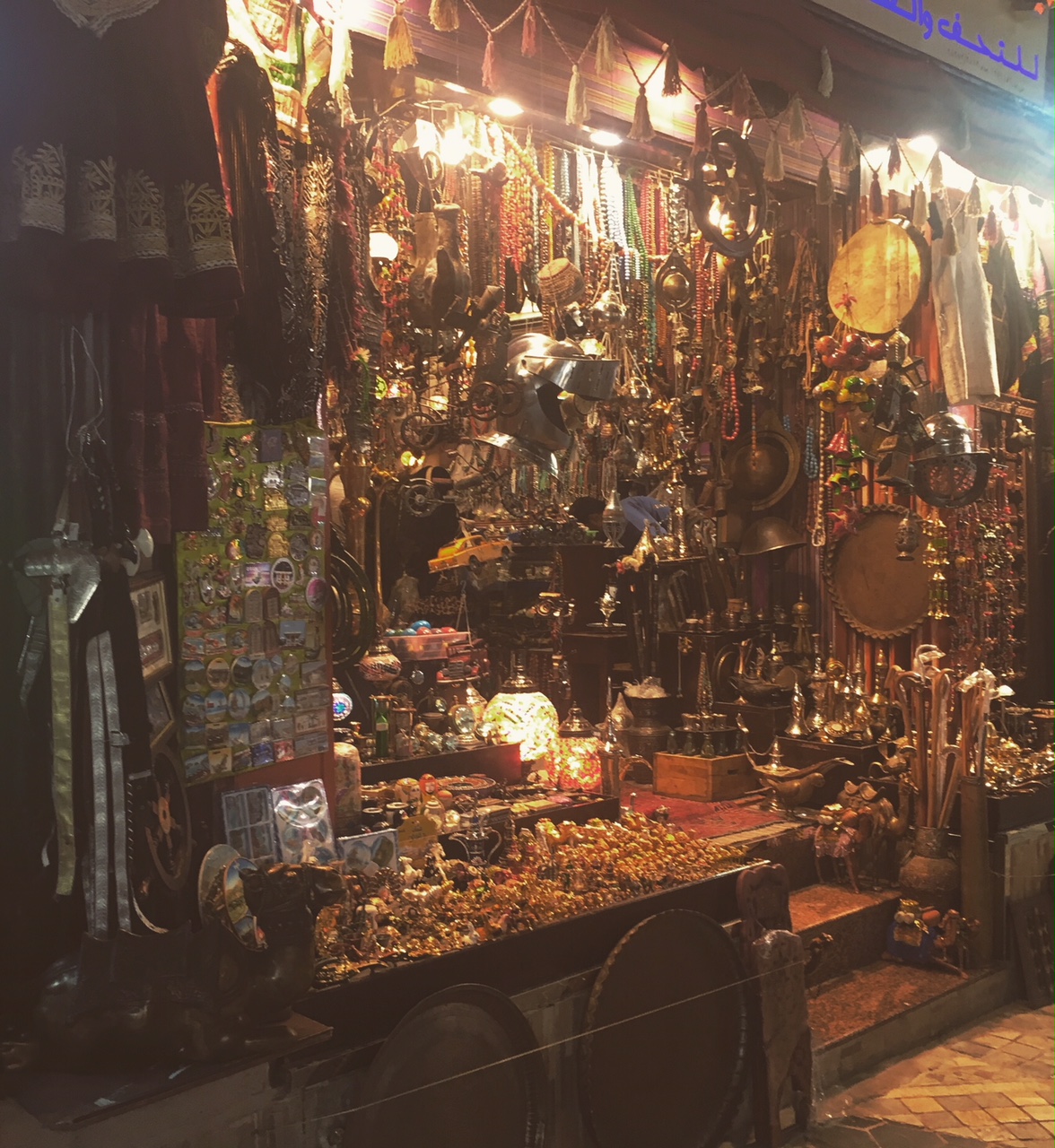
It really is the place to find your souvenir from the middle East. I was sold a palm-sized old fashioned silver coffee pourer by a charismatic salesman who insisted that it could be of everyday use. “This? You’re sure I could use this for coffee or is it just for show?.”
“Of course! Its for coffee!”. As he held it up and enthusiastically demonstrated the various moving parts I could tell that he definitely wanted me to buy something, anything, from him before I checked out any of his neighbours. Hiding a cheeky smirk as he watched me examine the miniature ornament, he was probably wondering why I couldn’t have just bought one of the many, many bigger ones he had which could hold their own so much better at breakfast. Suddenly in Muttrah’s sprawling mass of fabrics and trinkets I was transported back to every conversation I’d had with stall owners in every London market, and every time I’ve been swayed by a charming sales pitch. I needed this coffee pourer.
Its easy to get lost as you browse one colourful stall after another. But this just adds to the excitement of being in the kind of place that, if you’re new to the Middle East like I was, you’ll only have seen in films and on TV. Its best to surrender to the vibe, wander whimsically around and be drawn to whichever stall grabs your attention until you find the way out – I needed a good hour or two to see everything.
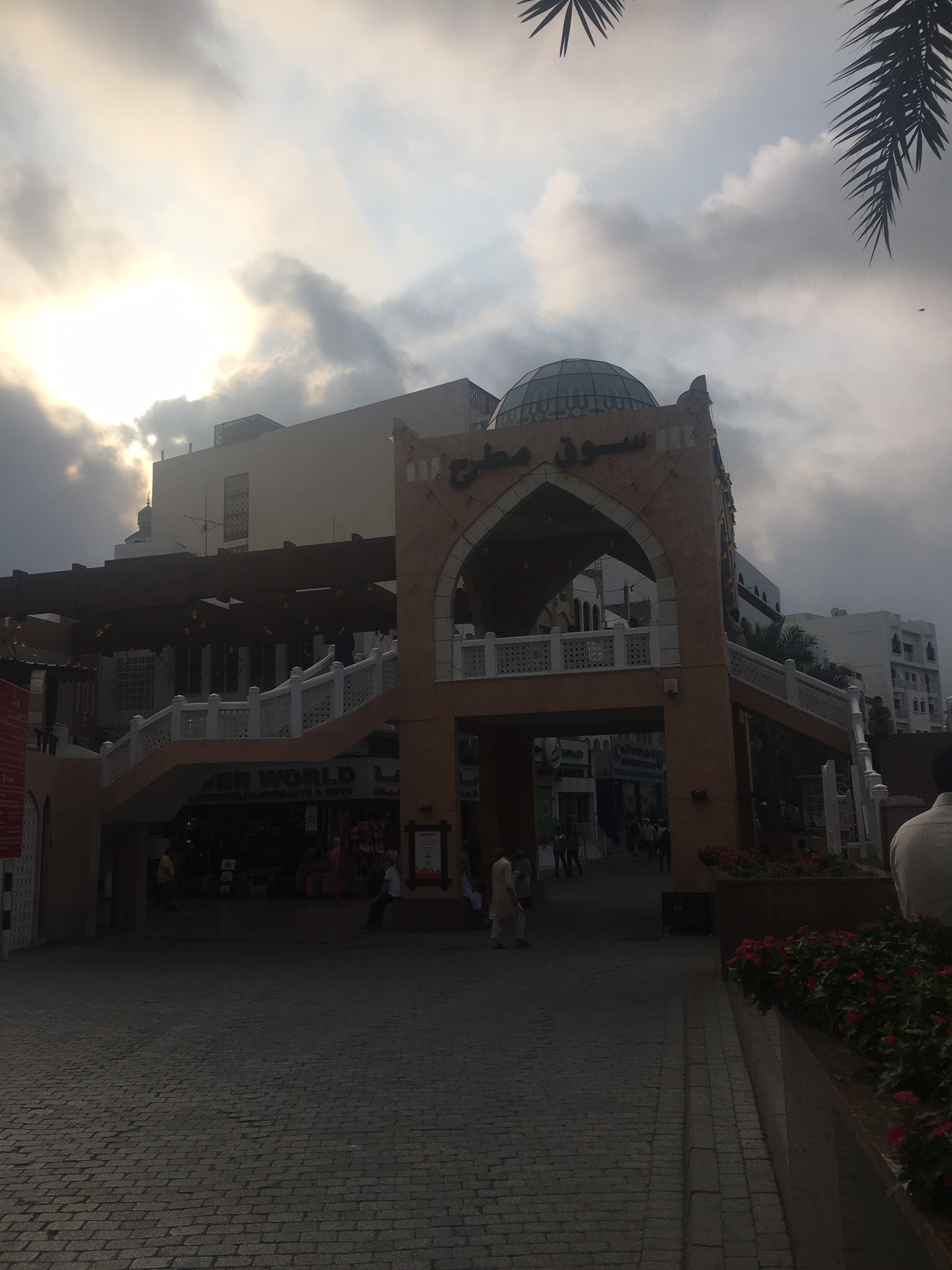
Luckily Gafoor was a patient man, and waited for me to get an Arabic coffee and some traditional Omani snacks from the food stall outside the main indoor market. On the way back we spoke about some local pastimes and he suggested that I try out a shisha cafe by the hotel, which is where he dropped me off to round off the day. You’ll find many of these types of cafes in Muscat as you would in the rest of the middle East, and they are worth trying out.
Of course there’s no alcohol being served but you need some food to keep you going, and there’s nothing better over here than hummous and warm pitta. Maybe its better local ingredients or just more respect paid to the recipe, but as with getting a croissant from a patisserie in Paris, you can’t truly explain why food so simple is better in the part of the world where it originated. It just is.
Sitting outdoors with a backpack, jogging bottoms on and my t-shirt exposing my sun-deprived skin to a soothing breeze, I must have stood out to everyone else in the place as the rest of the clientele was made up exclusively of men in white Jubba robes smoking shisha together while football was shown on a big TV. But as all we willed on Cristiano Ronaldo’s Real Madrid side to overturn their 2 goal deficit, eyes fixed on the screen while analysing every move like it was the most important thing in the world, my contrasting appearance didn’t matter.
The next day as morning prayers played out from the radio there was no doubt that with regards to setting, I may have been a long way from home. And maybe Oman does have its quirks that separate it from its cousins further West. No matter. Driving away from the hotel towards the bus station I couldn’t help feeling that everyone I’d met in that short time from Gafoor the patient taxi driver, to my favourite salesman at Muttrah Souk and the excited football fans in the shisha cafe, had provided me with an interesting lesson. That wherever you are in the world, you’re never really THAT far out of your comfort zone.